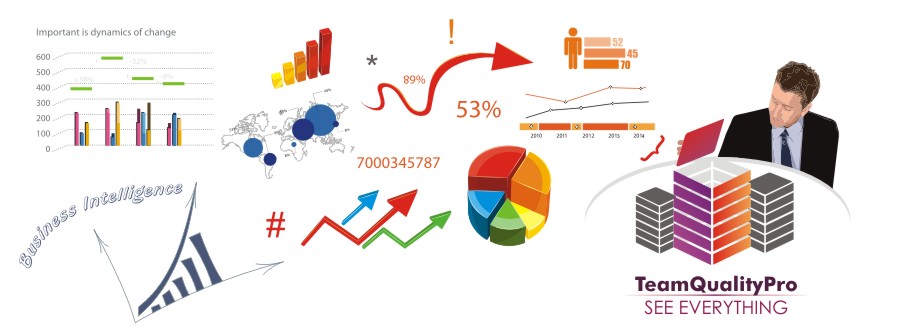-
Tool Reports Are Worthless
You probably have multiple tools that are used within your organization. All those tools probably have a report of some kind but those reports are worthless when you can’t see what’s causing items to occur. Management teams don’t look at metrics/reports just to see what’s going on, they also look at reports to make positive actionable decisions. Metrics allow management to understand what areas they should focus on.
Let’s look at a scenario:
You have a defect tracking tool, project planning tool and a code development tool. What good is the project planning tool if:
- You don’t know how many critical defects are currently open
- What areas the defects occur in
- Which developers are working on current Statement of Work versus the Change Request
As you can see that’s a lot of information you need but it’s spread out because tools that only report data for that tool are worthless when trying to get the big picture. With the scenario above you’re probably going to ask the various leads to get you the information which they are either going to pull by hand or run a report for that tool. You’ll have a meeting to review all the reports you were given but by the time the meeting happens the data is out of date so you have to start all over and/or you’re going to make the wrong decisions.
I’m not saying tools are worthless but I am saying that tools that only report data within themselves will not give you the full picture into your organization, your project, or your application.
In order to get a full picture to make proactive decisions you need to implement a tool that allows you to cross reference from one tool to another.

Below are three more key reasons why you should implement an automated dashboard solution:
- You have lots of tools data but no idea what it all means
Organizations have data everywhere. There’s data in finance, development, testing, etc. but no one gets all the info at their fingertips nor do they get the info when they need it.
If you implemented a dashboard you would be able to automatically pull data from all areas within your organization to give you an aggregated visual view of what’s occurring. A dashboard should allow you to view the data when YOU need it. A dashboard should allow you to easily spot what you need to focus on and drill down. - Reports are not available when you need them
Do you know how many critical defects your application has right now?Are you sure that’s a valid number?
Data is always changing but when you depend on metrics to be created manually they easily get out of date. A dashboard can be tied directly to your data sources/extracts to allow for real-time metrics, which allows you to be more proactive in your decision making. - You’ve outgrown Excel
Excel can only handle so much data so you are not able to get a full view of the historical and current data to plan out your future needs. This is a huge problem because if you can’t see where you’ve been how can you plan out where you’re going? Dashboards can allow you to view data from previous years and can help you predict what is needed in the future.
REMINDER: You don’t need to wait till you have all the data from all areas/tools of your organization to implement a solution. Take one bite at a time, get the solution working and expand.
Start getting a clear view of your data and implement TeamQualityPro (free demo). Have questions on how to implement a dashboard? Contact us directly, we’re here to help.
Trackback URL for this post:
https://www.teamqualitypro.com/software-metrics/tool-reports-are-worthless/trackback/




